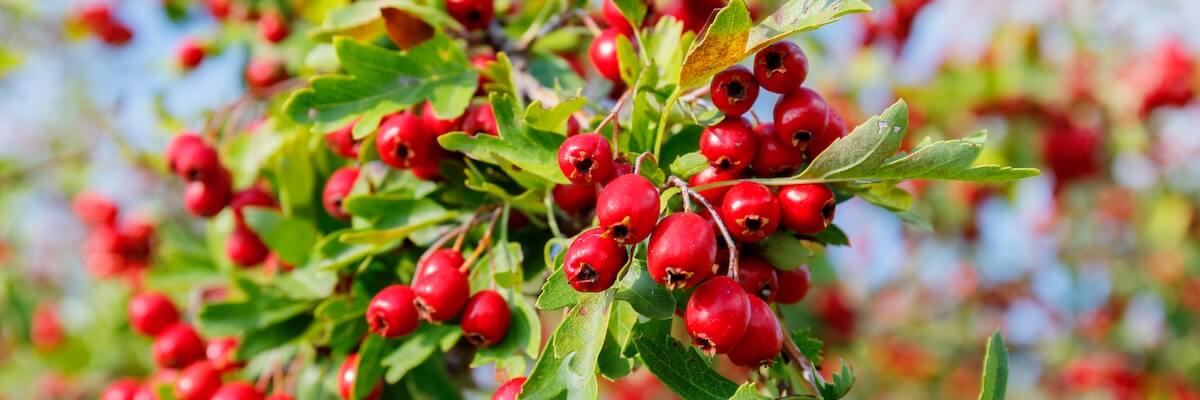Hawthorn

Crataegus laevigata / C. monogyna
During the Middle Ages, this thorny shrub from the genus Rosaceae with its white blossoms was a symbol of hope. Many ailments were treated with extracts of the blossoms, leaves and fruits of the hawthorn plant. Today hawthorn is called "medicine for the heart" and is used as a medication for heart failure.
Occurrence and appearance of hawthorn
Also sometimes called thornapple, Hawthorn is found all throughout Europe. It is a spreading shrub with long sharp thorns. It can grow to tree height and live for several hundred years. It puts out a large number of small, fragrant white flowers in early spring and bright red pome fruits ("haws") of about 1–2 cm by autumn. There are over a hundred species of hawthorn. Five of them of are used in pharmaceuticals and their active substances are essentially similar. In phytotherapy, dried hawthorn leaves, blossoms and fruits are used both individually and in combination to make extracts and infusions.
Active substances and effects
The efficacy of hawthorn preparations on the cardiovascular system is partly based on special flavonoids known to have antioxidant properties. These phytochemicals, previously called "vitamin P" after their discovery in the 1930s, have positive effects on heart muscle metabolism, protect blood vessels, and inhibit the formation of edemas.
Hawthorn contains procyanidin, better known as OPC (oligomeric proanthocyanidinse), which influence coronary flow. These plant-based bitter substances have strong antioxidant effects and are easily absorbed by the body. OPC support vascular dilation and can inhibit the development of thrombosis.
Hawthorn can
- strengthen the heart muscle in cases of impaired heart function due to age or following infectious disease
- dilates blood vessels – improves blood supply to diseased areas of the body
- boosts circulation
- stabilises blood pressure
- protects against edemas
Hawthorn helps relieve age-related ailments
Hawthorn preparations are popular for treating age-related cardiovascular ailments. As our animals age, their heart function weakens and the blood vessels lose their elasticity. They tire more easily and suffer from shortness of breath. This is aggravated by cold, wet weather. Hawthorn's active ingredients allow us to help our senior horses lead better lives.
Hawthorn can be administered long-term as all the parts of the plant used have no adverse effects. In combination with ginkgo or taiga root it has proven to be effective in improving general well-being and strengthening the organism, whilst the vitamin C in rose hips increases its antioxidant effects.
Sources and further reading
- Brendieck-Worm, C., & Melzig, M. F. (2018). Phytotherapie in der Tiermedizin. Stuttgart: Georg Thieme Verlag KG.
- Chevallier, A. (2016). Encyclopedia Of Herbal Medicine . Dorling Kindersley.
- Nahrstedt, A. (05. 1 2005). Inhaltsstoffe offizineller Weißdorn‐Drogen: Crataegus aus analytischer Sicht. Pharmazie in unserer Zeit, S. 22-26.
- vitalstoff-lexikon.de. (28. 10 2020). Von http://www.vitalstoff-lexikon.de/Sekundaere-Pflanzenstoffe/Sekundaere-Pflanzenstoffe/ abgerufen













